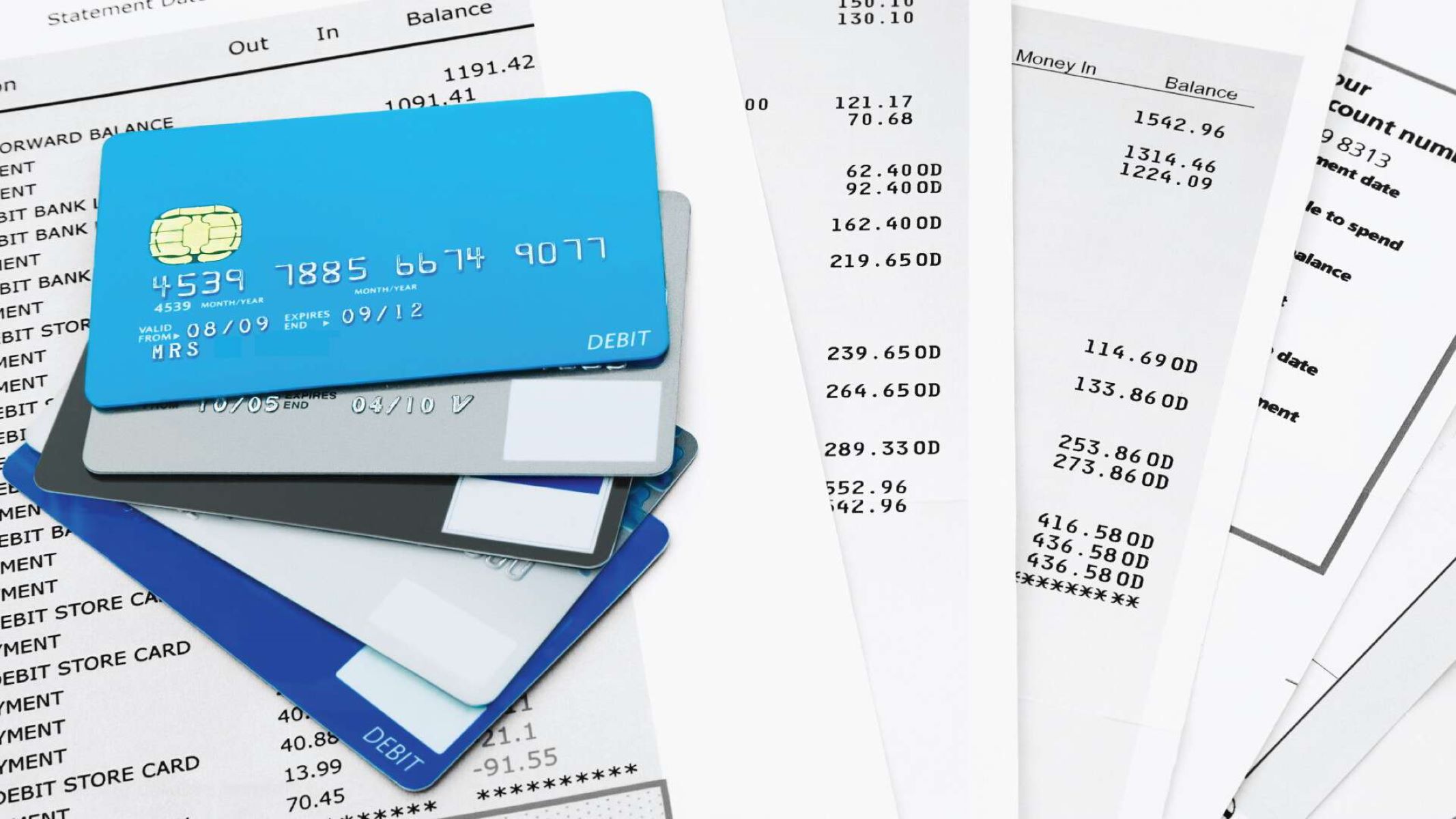

Finance
What Is Non-Traditional Credit
Published: January 9, 2024
Discover the benefits and uses of non-traditional credit in the world of finance. Explore innovative ways to manage your finances and gain financial freedom.
(Many of the links in this article redirect to a specific reviewed product. Your purchase of these products through affiliate links helps to generate commission for LiveWell, at no extra cost. Learn more)
Table of Contents
Introduction
In the ever-evolving world of finance, traditional credit sources such as banks and credit unions have long been the go-to options for individuals and businesses seeking financial assistance. However, as the financial landscape continues to change, non-traditional credit has emerged as a viable alternative for those who may not qualify for traditional credit or simply prefer different avenues to meet their financial needs.
Non-traditional credit refers to credit sources that fall outside of the traditional banking system. These can include online lenders, peer-to-peer lending platforms, microlenders, and even credit-building apps. The availability and utilization of non-traditional credit have been on the rise in recent years, driven by advancements in technology and shifts in consumer behavior.
While traditional credit sources often rely heavily on factors such as credit scores and collateral, non-traditional credit takes a different approach. It focuses on alternative methods of assessing creditworthiness, providing opportunities for individuals with limited credit history or unconventional sources of income.
In this article, we will explore the definition of non-traditional credit and its various types. We will also discuss the importance of non-traditional credit, its pros and cons, and provide examples of popular non-traditional credit options. Additionally, we will delve into how individuals can build non-traditional credit and assess its potential impact on their financial lives.
Whether you are a borrower seeking alternative credit options or a curious individual interested in understanding the changing landscape of finance, this article will provide valuable insights into the world of non-traditional credit.
Definition of Non-Traditional Credit
Non-traditional credit refers to credit sources that exist outside of the traditional banking system. While traditional credit relies on established financial institutions such as banks and credit unions, non-traditional credit encompasses a wide range of alternative options.
One of the key distinguishing features of non-traditional credit is its flexibility in assessing creditworthiness. Unlike traditional credit, which heavily relies on credit scores and collateral, non-traditional credit takes into account various alternative factors to determine an individual or business’s creditworthiness.
Non-traditional credit sources often focus on alternative data points, such as payment history for rent, utilities, and other recurring expenses. This approach allows individuals with limited or no credit history to access credit opportunities that may otherwise be out of reach.
Additionally, non-traditional credit providers consider factors beyond financial statements and credit scores. They may take into account factors such as educational background, employment history, and even social media presence to assess creditworthiness. This broader evaluation allows for a more holistic assessment of an individual’s financial situation and potential repayment capabilities.
Moreover, non-traditional credit sources can offer more flexible terms and conditions compared to traditional lenders. This can include lower interest rates, longer repayment periods, and more personalized loan options tailored to individual needs.
Non-traditional credit is often associated with alternative lending platforms that operate online. These platforms connect borrowers directly with lenders, cutting out the middleman and streamlining the loan process. This digital accessibility has made non-traditional credit more accessible to a broader range of individuals.
It is important to note that non-traditional credit does not replace traditional credit sources but rather complements them. It provides an alternative pathway for individuals and businesses to access credit, particularly for those who may face challenges in obtaining credit through traditional channels.
In the following sections, we will delve into the various types of non-traditional credit, exploring the diverse array of credit options available outside of traditional banking.
Types of Non-Traditional Credit
Non-traditional credit encompasses a wide range of credit options that exist outside of the traditional banking system. These alternatives offer a variety of borrowing opportunities for individuals and businesses. Let’s explore some common types of non-traditional credit:
- Online Lenders: Online lenders have emerged as a popular non-traditional credit option, providing individuals and businesses with access to loans through digital platforms. These lenders often have less stringent eligibility criteria, making it easier for borrowers with diverse financial backgrounds to secure funding. Online lenders offer a range of loan types, including personal loans, small business loans, and even peer-to-peer lending.
- Crowdfunding: Crowdfunding platforms have gained significant popularity in recent years. They allow individuals and businesses to raise funds for specific projects or ventures by tapping into a large pool of investors. Crowdfunding platforms can be a great non-traditional credit source, especially for entrepreneurs and innovators looking to bring their ideas to life.
- Microlenders: Microlenders are non-profit organizations or financial institutions that provide small loans to individuals who may not qualify for traditional credit. These loans are typically geared towards low-income individuals or those with limited credit history. Microlenders often focus on promoting financial inclusion and supporting underprivileged communities.
- Credit-Building Apps: Credit-building apps are innovative tools that assist individuals in building or improving their credit scores. These apps work by providing credit lines or loans with manageable repayment terms, allowing users to demonstrate their creditworthiness. By making timely repayments, users can establish a positive credit history, improving their chances of accessing traditional credit sources in the future.
- Peer-to-Peer Lending: Peer-to-peer lending platforms connect borrowers directly with investors who are willing to lend money. These platforms serve as intermediaries, facilitating transactions between individuals seeking loans and those looking to invest their funds. Peer-to-peer lending offers competitive interest rates and flexible terms, making it an attractive option for both borrowers and investors.
- Alternative Credit Scoring: Non-traditional credit also includes alternative credit scoring methods that go beyond traditional credit reports. Some companies use alternative data points such as rent payments, utility bill history, and even social media activities to assess creditworthiness. These innovative approaches broaden the scope of evaluating creditworthiness and provide opportunities to individuals with limited credit history.
These are just a few examples of the types of non-traditional credit available in the financial landscape. Each option offers unique advantages and caters to different borrowing needs. When considering non-traditional credit, it is essential to research and understand the terms, fees, and repayment conditions associated with each option to make an informed decision.
Importance of Non-Traditional Credit
Non-traditional credit plays a crucial role in the financial ecosystem by providing individuals and businesses with alternative pathways to access credit. Here are some key reasons why non-traditional credit is important:
- Improved Access to Credit: Non-traditional credit opens up borrowing opportunities to individuals who may face challenges in obtaining credit through traditional channels. It provides options for those with limited credit history, self-employed individuals, and small businesses without extensive financial documentation. By embracing alternative credit sources, individuals who were previously overlooked by traditional lenders now have a chance to secure the funding they need.
- Financial Inclusion: Non-traditional credit promotes financial inclusion by expanding access to credit for underprivileged individuals and communities. It helps bridge the gap between those who have been excluded from the traditional banking system and the financial resources they require. By considering alternative data points and using innovative credit assessment methods, non-traditional credit sources aim to create a more inclusive financial landscape.
- Flexibility and Innovation: Non-traditional credit providers often offer more flexible terms and conditions compared to traditional lenders. They understand the diverse needs of borrowers and strive to accommodate their specific requirements. Non-traditional credit options are often characterized by quicker loan approval processes, lower interest rates, and more personalized loan terms. This flexibility allows borrowers to find credit options that align with their financial goals and capabilities.
- Promoting Entrepreneurship and Innovation: For aspiring entrepreneurs and innovators, non-traditional credit can be a game-changer. It offers an avenue to secure funding for startups, small businesses, and creative projects that may not fit the mold of traditional lending criteria. By providing access to capital, non-traditional credit supports entrepreneurial endeavors and encourages innovation in various industries.
- Building or Rebuilding Credit: Non-traditional credit sources, such as credit-building apps, can be instrumental in establishing or improving credit scores. These tools allow individuals with limited credit history or poor credit scores to demonstrate their creditworthiness through responsible borrowing and repayment. By building a positive credit history, individuals can enhance their eligibility for traditional credit sources and access better financial opportunities in the future.
While non-traditional credit provides numerous benefits, it is important to exercise caution and thoroughly understand the terms and conditions of any credit option. Borrowers should compare interest rates, fees, and repayment terms to ensure they are making informed decisions that align with their financial circumstances and goals.
Non-traditional credit is revolutionizing the financial landscape, providing increased access, opportunities, and financial empowerment to individuals and businesses alike. It is an essential component of a diverse and inclusive credit ecosystem that complements traditional sources of credit.
Pros and Cons of Non-Traditional Credit
Non-traditional credit offers unique advantages and disadvantages compared to traditional credit sources. It is important to consider both the pros and cons before opting for non-traditional credit options. Let’s explore them:
- Pros:
- Increased Access: Non-traditional credit provides opportunities for individuals and businesses who may not qualify for traditional credit due to limited credit history, unconventional income sources, or other factors.
- Flexibility: Non-traditional credit sources offer more flexibility in terms of loan amounts, interest rates, and repayment terms compared to traditional lenders.
- Innovation: Non-traditional credit platforms embrace technological advancements and alternative credit assessment methods, making them more adaptable to changing consumer needs.
- Speed: Many non-traditional credit options have streamlined application processes, allowing borrowers to access funds quickly.
- Financial Inclusion: Non-traditional credit promotes financial inclusion by providing opportunities to underprivileged individuals and communities who may have limited access to traditional bank loans.
- Cons:
- Higher Interest Rates: Some non-traditional credit options may come with higher interest rates compared to traditional loans, reflecting the increased risk associated with alternative credit assessment methods.
- Lack of Regulation: Non-traditional credit sources may operate with less oversight and regulation compared to traditional financial institutions, potentially exposing borrowers to unscrupulous practices.
- Limited Transparency: Some non-traditional lenders may not disclose all fees and charges upfront, making it essential for borrowers to carefully review loan terms and conditions.
- Potential for Predatory Lending: Due to the less regulated nature of non-traditional credit, there is a risk of encountering predatory lenders who take advantage of borrowers in vulnerable financial situations.
- Not Accepted Everywhere: Non-traditional credit may not be accepted by all vendors and institutions, limiting its usability in certain transactions or circumstances.
It is important to carefully evaluate the pros and cons of non-traditional credit and consider your specific financial needs and circumstances. Conduct thorough research, compare options, and read reviews before engaging with any non-traditional credit provider.
Remember, non-traditional credit should be used judiciously and responsibly. Borrowers should assess their repayment capabilities, understand the terms and conditions, and borrow only what they truly need.
Examples of Non-Traditional Credit
Non-traditional credit encompasses a wide range of credit options that exist outside of the traditional banking system. Here are a few examples of popular non-traditional credit sources:
- Online Lenders: Online lenders such as LendingClub and Prosper provide individuals and businesses with access to loans through digital platforms. These lenders operate online and often have streamlined application processes, making it easier for borrowers to get approved for loans without extensive paperwork.
- Microlenders: Organizations like Kiva and Accion are dedicated to providing small loans to underprivileged individuals and communities. Microlenders focus on supporting entrepreneurs and small businesses that may not qualify for traditional bank loans due to limited credit history or lack of collateral.
- Crowdfunding Platforms: Platforms like Kickstarter and Indiegogo allow individuals and businesses to raise funds for specific projects or ventures. Crowdfunding involves gathering small contributions from a large number of people, providing an alternative source of funding for creative projects, startups, and social initiatives.
- Credit-Building Apps: Credit-building apps like Self and Chime help individuals build credit or improve their credit scores. These apps offer credit-building options such as secured credit cards or installment loans, allowing users to demonstrate their creditworthiness through responsible borrowing and repayment behaviors.
- Peer-to-Peer Lending: Platforms like Prosper and Upstart facilitate peer-to-peer lending, connecting borrowers with individual investors looking to lend money. Peer-to-peer lending offers borrowers competitive interest rates and provides investors with an opportunity to diversify their investment portfolios.
- Alternative Credit Scoring: Companies like Experian Boost and UltraFICO use alternative data points to assess creditworthiness. For example, Experian Boost allows users to add utility and telecom bill payment history to their credit reports, potentially improving their credit scores.
These examples represent just a fraction of the wide range of non-traditional credit options available. It is important to carefully consider the terms, fees, and eligibility criteria of each option before choosing the one that best suits your financial needs and goals.
Remember to do thorough research, read reviews, and understand the risks and benefits associated with each non-traditional credit source. By making informed decisions, you can leverage non-traditional credit to fulfill your financial requirements and expand your access to credit.
How to Build Non-Traditional Credit
Building non-traditional credit can be a viable option for individuals with limited or no credit history, as well as those looking to diversify their credit profiles. Here are some steps you can take to build non-traditional credit:
- Research Non-Traditional Credit Options: Start by researching non-traditional credit options that align with your financial goals and circumstances. Look for reputable online lenders, credit-building apps, or microlenders that offer products tailored to your needs.
- Apply for a Secured Credit Card: A secured credit card is a great tool to begin building credit. With a secured card, you provide a cash deposit as collateral, which serves as your credit limit. Make regular, on-time payments to establish a positive payment history and improve your credit score.
- Consider a Credit-Builder Loan: Credit-builder loans are specifically designed to help individuals build credit. With these loans, the lender holds the loan amount in a savings account, and you make regular payments towards the loan. Once fully repaid, you receive the funds, and you have established a positive credit history.
- Utilize Credit-Building Apps: Credit-building apps such as Self and Chime offer opportunities to establish credit. These apps provide credit lines or loans with manageable repayment terms. By making timely payments, you can build a positive credit history.
- Add Alternative Data: Explore options to add alternative data to your credit report. Some credit reporting agencies allow you to include rent payments, utility bills, and telecommunications bills to showcase your responsible payment history.
- Monitor and Protect Your Credit: Regularly monitor your credit report to ensure accuracy and identify any potential errors or fraudulent activity. Consider using credit monitoring services or apps to stay informed about changes in your credit profile.
- Practice Responsible Borrowing and Repayment: Building non-traditional credit requires responsible borrowing and timely repayment. Make sure to borrow only what you can afford to repay and make consistent, on-time payments to demonstrate your creditworthiness.
Remember, building non-traditional credit takes time and patience. It is crucial to establish a positive credit history by consistently meeting your financial obligations. Additionally, maintaining a low credit utilization ratio and avoiding excessive debt can contribute to a healthier credit profile.
Building non-traditional credit is an opportunity to diversify your credit options and improve your financial standing. By following these steps and being proactive in managing your credit, you can increase your chances of accessing traditional credit sources in the future.
Conclusion
Non-traditional credit has become an important alternative for individuals and businesses seeking credit outside the traditional banking system. It offers increased access, flexibility, and innovative credit assessment methods that cater to a diverse range of borrowers.
Throughout this article, we have explored the definition of non-traditional credit, its various types, and the importance it holds in the financial ecosystem. We have also discussed the pros and cons of non-traditional credit, highlighting the advantages of increased access and flexibility, as well as potential drawbacks such as higher interest rates and limited regulation.
Examples of non-traditional credit sources, such as online lenders, microlenders, and credit-building apps, demonstrate the breadth of options available to borrowers. These alternatives provide avenues for individuals with limited credit history or unconventional income sources to secure the financial assistance they need.
In addition, we discussed how to build non-traditional credit, emphasizing the importance of responsible borrowing, utilizing credit-building tools, and considering alternative data points to showcase creditworthiness. Taking these steps can help individuals establish a positive credit history and strengthen their overall financial profile.
While non-traditional credit offers numerous advantages, it is essential for borrowers to exercise caution, research options, and understand the terms and conditions before choosing a non-traditional credit source. By doing so, individuals can make informed decisions that align with their financial goals and needs.
In conclusion, non-traditional credit expands credit access, promotes financial inclusion, and drives innovation in the financial industry. It complements traditional credit sources and provides opportunities for individuals and businesses to meet their financial objectives. By exploring the diverse range of non-traditional credit options available and employing responsible borrowing practices, individuals can tap into the benefits of non-traditional credit and improve their financial well-being.














